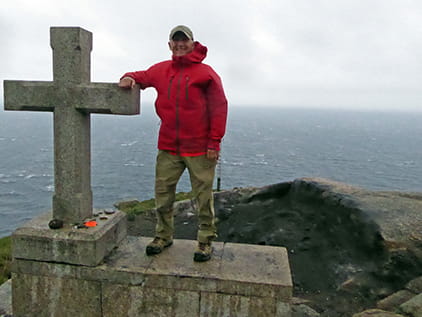On Top of the World

In recognition of the Christmas and New Year’s holidays, some of The University of Kansas Health System’s offices will have modified hours on Thursday, December 25, and Thursday, January 1.

Amateur photographer Richard Rowe sat in the passenger seat as a friend drove down a country road. Looking down at his camera to examine the images he'd just taken of a quaint old barn, he never saw the oncoming vehicle cross the center line and strike their car head on.
He recalls very little of the next 2 months.
"I vaguely remember my friend Jason, who was driving, yell something like, 'Look out!' and sometime later someone saying, 'Mr. Rowe, you've been in a car accident,'" Richard says. "It was a long, long time before I was thinking clearly again."
Richard grew up in Billings, Montana, and lives in Poolesville, Maryland. At the time of the crash, he was enjoying photography along with his other passion – travel. He and his wife, Cheryl, were visiting Richard's sister in Manhattan, Kansas.
The people I met and the care I received were terrific. The doctors are amazing, and the nurses have everything to do with day-to-day comfort. I am thankful. – Richard Rowe

